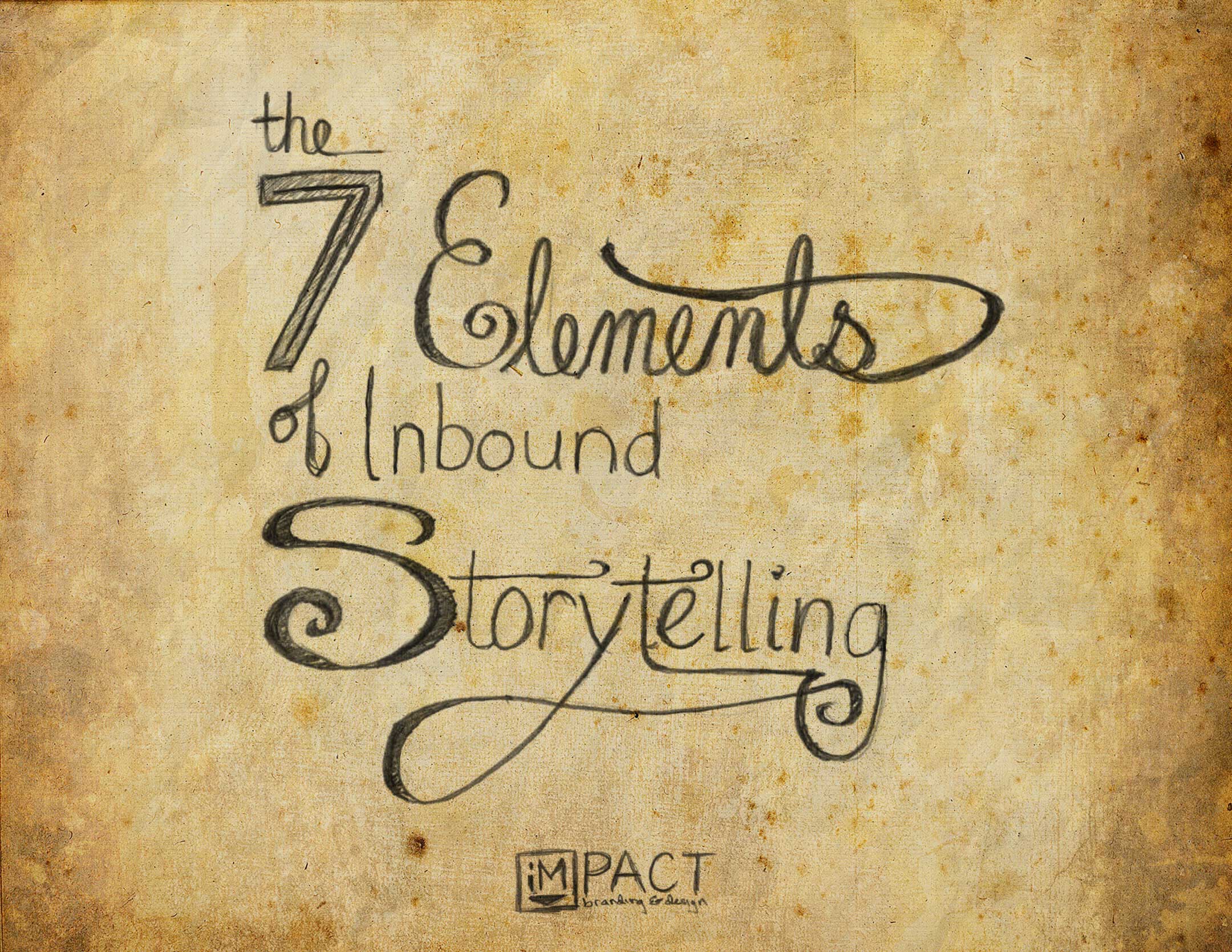
John Bonini
Marketing Director, @bonini84
As the Marketing Director at IMPACT Branding & Design, John oversees the company’s entire lead generation and branding strategy, utilizing blogging, premium content creation, social media marketing, search engine optimization and video marketing in order to help grow the company and expand its reach.
Under John’s direction, IMPACT has experienced significant growth in its blog subscribers, social media following, as well the company’s overall traffic and lead generation.
In addition to his work at IMPACT, John has also been interviewed and featured in several industry leading publications, including the Wall Street Journal’s SmartMoney, MarketWatch, as well as the HubSpot blog.
Design & Layout by Bobby Kane (@bobbyjkane)
F
ifteen years ago technological advancements made it necessary for your business to have a website.
Six years ago, social change made it necessary for your business to get on Facebook.
Around this same time period, it became necessary for your business to start blogging in order to differentiate your brand and get found as consumers relied more and more on search engines to solve problems and conduct product research.
So what happens now that everyone has caught up? In a post-outbound world where most businesses are blogging and engaging on social media, how are we supposed to stand out?
We tell a different story.
Your story is what inspires someone to take action and make a purchase. Generic value propositions and dry, boring content won't inspire anyone.
Here's how to develop a remarkable story and separate your brand from the noise.

W
hy are you doing what you're doing?
Forget the monetary reasons for a minute. You have a reason you got into the business or industry you're in. You have goals and aspirations.
If there's one thing you hope your customers get from your product or service, what is it?
This has to be at the core of your story. Wear it on your sleeve as a brand.
It allows your audience to see "behind the curtain." To get a glimpse of the human element that fuels your brand.
It also inspires consumers to believe in your brands message.
Don't confuse your message with what you're selling. Your message is not what you're selling, but rather how you're selling it.
After all, Dunkin' Donuts isn't selling "American Runs on Dunkin'; they sell coffee. The slogan is simply part of the story that helps sell that coffee.
Dunkin' Donuts wants their customers to consume good coffee. Quickly, so they can get on with their day. Their story – from the slogan to the implementation of drive-thrus – stays true to what they're trying to accomplish.

T
he best storytellers know their audience. It's the only way you can possibly resonate with them emotionally or behaviorally; you have to know them well enough to understand what triggers and inspires certain actions.
Consult your buyer personas and focus on identifying personality traits and behavioral information to ensure the story you want to tell will even resonate.
If you don't have buyer personas, get started in creating them. Interview your current customers. Poll your followers through your various social media channels to learn both the behaviors and demographic of the people who already take interest in your brand.
Not only is this essential in telling a story that resonates, but it's also important to the success of your entire campaign.
If you don't know your ideal prospect, how can you possibly appeal to them?

T
o fully develop your brand's tone, you first must understand the voice of your customers.
Focus on understanding the personality of your ideal prospects. once again, by reviewing your buyer personas and current customer database. How can you tell the story you identified earlier in such a way that will appeal to their emotions?
For example:
- Strategic/Analytical – Appeals heavily to CEOs and other C-Level execs. They have a vision of where their organization is going, they're looking for the people and processes to lead them there.
- Empathetic – Appeals heavily to mid-management. (We understand the stress you're under. We''ll make it easier for you.)
Depending on your audience, this will determine the specific tone that will truly resonate in order to inspire a purchase.

D
oes America really run on Dunkin'?
Of course not.
However, millions of people buy into this story every single morning.
Is Snapple really made from the best stuff on earth? Well, if you count sugar and and other additives as the best stuff, then sure.
So are these household brands lying to us? Not quite. They're simply adding a healthy dose of hyperbole to an already great product in order to tell a story they know their audience will relate to.
In order to truly differentiate your brand from the competition, you have to stray from the obvious. You can't say what everyone else is saying.
Big brands understand this. While we may not be able to match their marketing budgets and overall reach, we can certainly take lessons from their ability to inject hyperbole into a story that inspires millions to buy their products.

A
remarkable brand story shouldn't be restricted just to the undertone of your blog articles.
In fact, everything from your value proposition to your Facebook page should reflect the story you're trying to tell. This means your website, any print collateral, branded t-shirts or other forms of swag your company produces, and even your message at speaking engagements should remain consistent with the story.
Your story isn't just about content and what you're saying, but also the decor of your workspace, store, to the manner in which you answer the phone, and how you engage with your followers via social media.
Take Starbucks as an example. Rather than going with a catchy slogan and installing drive-thrus at every location, Starbucks went the other way. Why? Because they're going after a more affluent audience than the one Dunkin' has a hold of.
It's why they have more high-scale decor. It's also why many of them don't have drive-thrus.
They know that their customers will pay a little more – and wait a little longer – for the whole "barista" experience. It's part of the story they're telling, and it encompasses everything from furnishings to a menu most have trouble pronouncing.

Journalists write articles.
Marketers tell stories.
T
he difference is simple. In order to be an effective storyteller and make people care, you need to insert yourself into the story. Journalists work hard to remove all traces of themselves from an article in order to ensure objectivity, as without it, a news article has no merit.
Objectivity has no place in your marketing message. You need to be as subjective as possible. Talk about your experiences. Detail little anecdotes as they relate to the topic or campaign at hand.
Get personal.
After all, products don't sell themselves. Not even great ones.
People do. Embrace this.
This makes you and your brand much more relatable. Don't shy away from inserting yourself and your opinions into the content you put out.
Think of it as writing a column rather than an article.
This helps to create your own unique story.

B
ig words and business babble will only confuse and cloud the message of your story.
The goal of your story should be clarity, not crafting Dickens-like content filled with industry jargon.
You want your story to be easily understood, much like we all understand the differences in messages between Dunkin' Donuts and Starbucks.
The most effective way of doing this is by
talking and acting like a human.
The dawn of the Internet saw the dehumanization of brands, while the rise of social media has titled the scale back in favor of human interaction.
Effective storytelling, however, has always been about keeping it simple, being human, and most importantly, being different than everyone else.
Turn these tips into Actual Results
How Can You Improve Your Inbound Marketing and Achieve Your Business Goals?
In your free assessment, you'll receive:
- A 30 minute conversation with an inbound marketing consultant.
- An evaluation your current website and marketing strategy.
- Suggestions for improvement.
- Ideas on how to measure the return on your marketing investment.
- Real solutions to achieve your business and marketing goals.
This is not a sales call and you'll have no-obligation to buy anything. If after the assessment you feel IMPACT can help you achieve your marketing goals, we'll schedule a second call to start developing your inbound marketing strategy.








